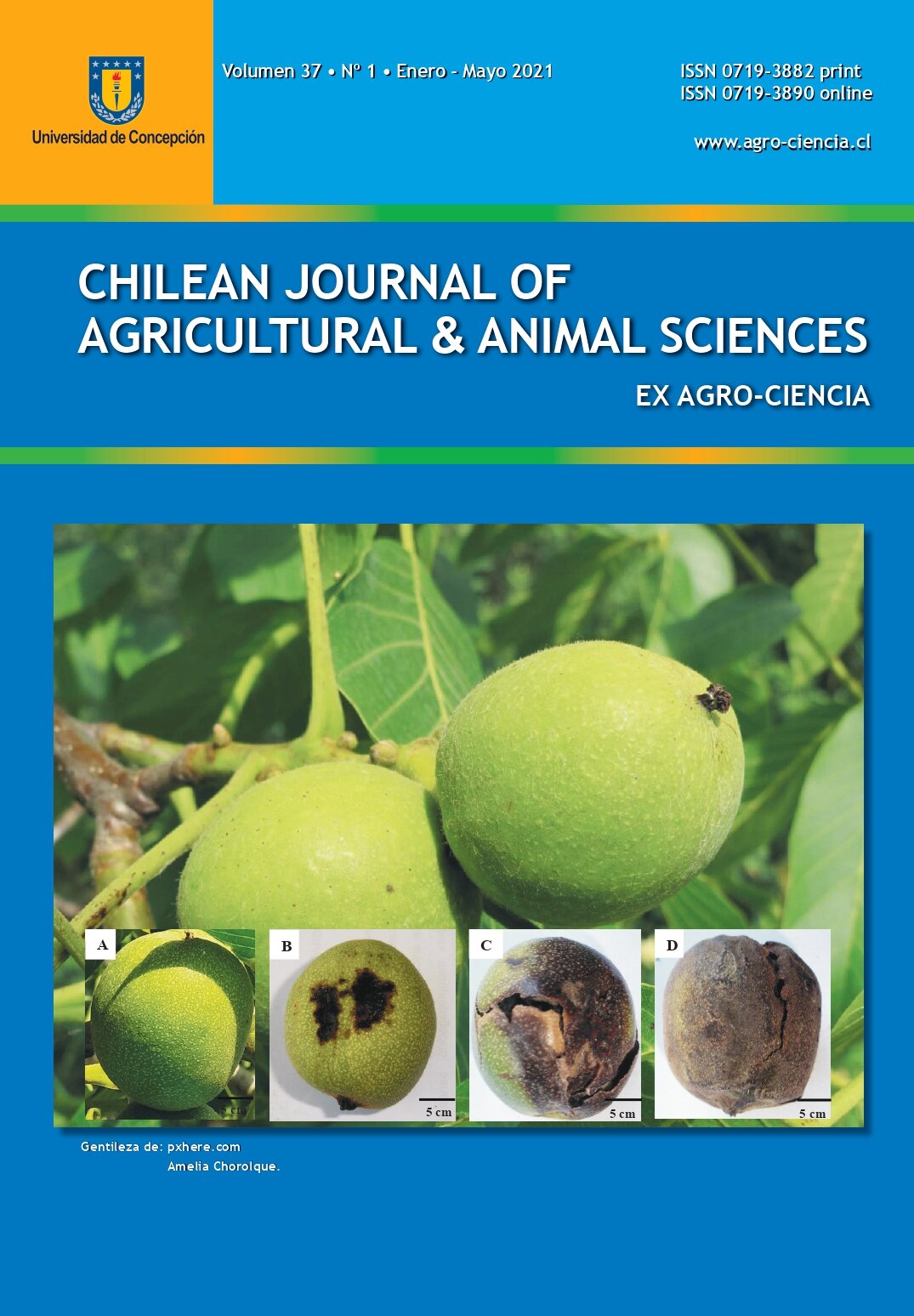TECHNICAL EVALUATION OF TWO CORN (Zea mays L.)GRAIN DRYING SYSTEMS BY MODELING TO INDUSTRIAL SCALE
Alejandro Araneda1*, Rudi Radrigán1, Marco López1, y María González1
ABSTRACT
Drying is one of the most widely used processesin the preservation of grains, which involves reducing moisture content by applying air and heat so as to maintain the appearance and nutritional quality of grains as food or viability as seeds. Two drying systems for corn kernelswere compared in this study:with cooling and no cooling.These systems consist of the applicationand no application of airflow at room temperature in the cooling section of a trestle-type continuous flow dryer. The advantage of the system with no cooling in the dryer relies on the fact that grainsare cooled in a separate silo, which allowsfor a better quality product in terms of lower percentage of fissured kernels, higher hectoliter weight and germinationrate. The aim of this study was to evaluate these two systems by using mathematical modeling as a tool to make decisions on which drying system to use based on specific electricity and fuel consumption, efficiency and performanceof the drying process. The model of dwell time was validatedwith data obtained from the Thompsonmodel for drying curves of cornkernels, withresults comparableto those obtained withthismodel; the best approximation was observed with the drying system model with no cooling. Furthermore, this system presented lower specific electricity consumption, although there were no significant differences (valuep≥0.05) between the values for specific fuel consumption, efficiency and performance observed in the drying process of each system.
Key words: drying system,cooling, energy balance, dwell time, Zea mays.
1Universidad de Concepción, Facultad de Ingeniería Agrícola, Avenida Vicente Méndez 595, Chillán, Chile.
*Autor para correspondencia: [email protected]


